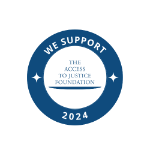On the 1 July 2018 it would have been the 200th birthday of Ignaz Semmelweis, a Hungarian physician whose work demonstrated the importance of hand washing as a means of infection control in a health care setting.
We all know now of course how important it is to wash our hands in the context of preventing the spread of infection. As children we were always encouraged to wash our hands before eating for example, to make sure we would kill any “germs” we may have picked up. Hospitals routinely request that visitors use antiseptic hand gel when visiting patients and surgeons have to “scrub up” before an operation. Of course, this was not always the case, and back in 1865, procedures before operations would have been quite different; surgeons would not have routinely washed their hands between seeing patients, resulting in a higher rate of the transfer of bacterial infections.

Who was Ignaz Semmelweis?
Semmelweis was a Hungarian physician working in Vienna General Hospital’s First Obstetrical Clinic in 1847. He would examine patients, supervise difficult deliveries and teach students. The First Clinic had a high maternal mortality rate and a high incidence of childbed fever (a female bacterial infection following childbirth). This rate is perhaps unsurprising, all those years ago, without the benefit of antibiotics. There was also a Second Clinic, which although adopted very similar techniques as the First Clinic, had a much lower maternal mortality rate.
Discovery
Semmelweis was determined to find out why so many more deaths occurred in the First Clinic and began investigating, and then eliminating several factors as potential causes. Eventually, after his friend was accidentally poked with a scalpel while performing a post mortem, he discovered that there was a connection between what he called “cadaveric contamination” and the childbed fever. He concluded that the physicians and students carried “cadaverous particles” on their hands from the autopsy room to the patients and that some unknown “cadaverous material” caused childbed fever. The Second Clinic did not carry out as many autopsies, hence the difference in deaths.
Semmelweis began to use a solution of chlorinated lime for washing hands, because this best removed the smell of infected autopsy tissue and so he thought would destroy the contaminating material that was being transferred.
As a result of Semmelweis’ practises the mortality rate in the First Clinic dropped considerably and he became known as the “saviour of the mothers”.
Legacy
At the time, Semmelweis’ ideas about cleanliness were largely ignored or rejected. Indeed, some physicians were offended by the idea that their hands could be unclean. Semmelweis continued to badger his peers and various institutions with his ideas and eventually he was committed to an asylum when his peers thought he was losing his mind. He died there 14 days after his admission.
Semmelweis’ work was eventually revisited and credited about twenty years after his death when those, including Louis Pasteur, produced evidence of the “germ theory”. It is possible that we would not have the practices we have in place today without physicians like Semmelweis, but even with what we know about infection control today, infections cannot always be prevented.
When infections do occur, it is very important that the signs are recognised quickly so that the right treatment can be given. This is crucial with things like septicaemia in particular (a serious bloodstream infection) which can be life threatening, particularly if this progresses to sepsis (widespread inflammation throughout the body), although it can sometimes be difficult to identify the exact cause of the infection and select the appropriate antibiotic.
With a somewhat ironic twist of fate septicaemia is indeed what Semmelweis is thought to have died from in 1865, possibly from a wound he sustained after an alleged beating at the asylum. His legacy lives on however and today he remains recognised as a pioneer of antiseptic policy.
"*" indicates required fields

 Back
Back
















